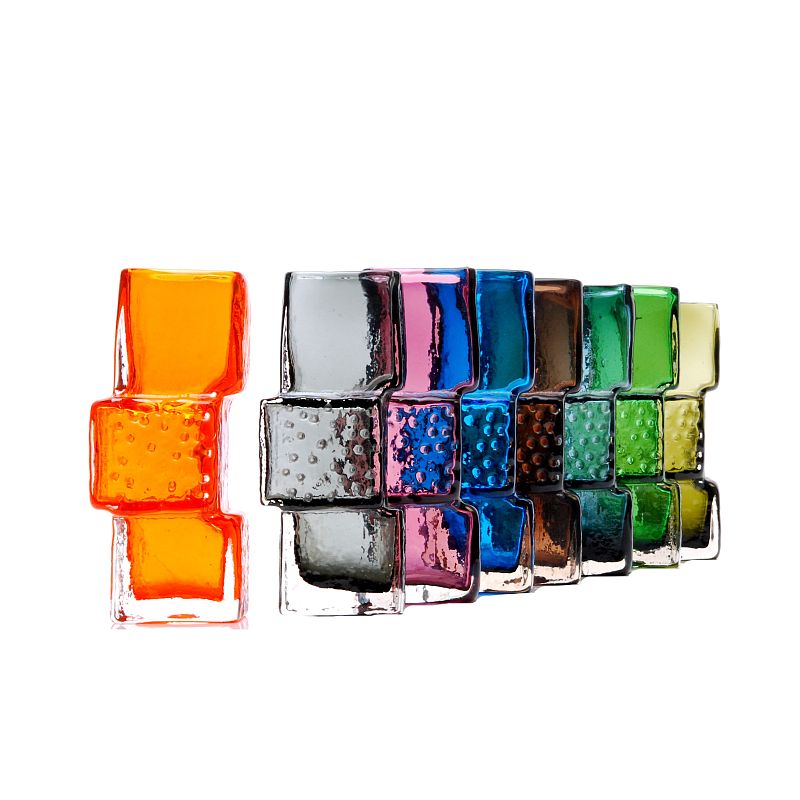Whitefriars glass
Over recent months the market for Whitefriars has become one of the hottest and most discussed amongst 20th Century glass collectors. Prices continue to rise and records continue to be broken week on week! Fieldings Auctioneers, located in the heart of the British glass industry sell more glass than any other auction house in the country and our reputation for glass is truly global.
Whitefriars is a regular feature in our sales from early James Powell & Son pieces through to the later creations of the great Geoffrey Baxter. This distinguished glass making firm with its long heritage has produced and endless array of iconic designs reflecting the mood and style of the period they were made for.
Founded in 1834 as James Powell & Sons and originally based at Whitefriars in the City of London, the factory moved to a new site at Wealdstone, in Middlesex, in 1923. During the late 19th century, under the inspired management of Harry Powell it became recognised as the leading glassmakers of the Arts and Craft Movement
Geoffrey Baxter was one of the outstanding British glass designers of the post-war period. From 1954 until 1980 he worked for Whitefriars Glass, designing a wide range of domestic glass, including tableware and ornamental glass. When Baxter joined the company in 1954, sleek "Scandinavian Modern" glass was all the rage. He was influenced by the clean-lined purity and elegance of the Scandinavian aesthetic, and was successful in producing designs which could compete with it on the British market.
While the main Stourbridge glass industry stuck to the manufacture of expensive full-lead crystal and relied on traditional heavily cut design, Whitefriars adopted continental-style soda glass for the bulk of their production after the Second World War because it was much cheaper to make and could be used in a more flexible way, particularly with regard to modern colours and shapes. Baxter's philosophy was, "It's all very well to make a masterpiece, but what's the point if only the elite can afford to buy it?"
A Modern Classic “The Drunken Bricklayer” – Designed by Geoffrey Baxter for Whitefriars 1967
The exposure of Whitefriars work over recent years has led to a greater understanding and awareness of the pieces that were once all too swiftly packed for the car boot, numerous television shows and reference books have meant that people are more shrewdly taking a second look at Gran’s colourful glass vases.
Whitefriairs adopted many different techniques in glass manufacture over their long history including blow moulding, free blowing, texturing, applied and cut decoration. Often influenced by historical references or other active design movements they were always in step with fashion and trends particularly across the changing face of the mid to late 20th Century.
There are many designers who made Whitefriars such an institution in the international glass field including Harry Powell and James Hogan, but today’s collectors seem to favour the designs of Geoffrey Baxter whose extensive catalogue and dramatic designs are now changing hands for considerable sums.
Under his eye the “Textured” range was launched in 1967 following the strong trends and designs being created by leading Scandinavian designers. Today it is one of the most instantly recognised products of the post war period with its quintessentially 60’s feel, look and colour palette.
Baxter developed a new method of mold making using pieces of old wood, bark, tacks, nails and wire. These components were used in highly original and unusual ways that produced striking effects when cast into iron and used to manufacture cased textured glass.
There are many variations on the “Textured” theme, which include pieces now fondly known as “Banjo”, ”Mobile phone” and “Nuts and Bolts”, however it is the “Drunken Bricklayer” that remains one of the most sought after and loved of all the range. The simple arrangement of three offset cubes became an instant success. Issued in two sizes (8” and 12”) the vase came in a range of colours including tangerine (orange), kingfisher blue (mid blue), cinnamon (brown) and pewter (grey).
These deep relief-moulded vases, the rough surface textures of which were derived from materials as diverse as tree bark, gouged wood, copper wire and tin tacks, were considered revolutionary at the time: nothing remotely like them had been seen before in Britain.
Today these vases seem to strike a resonance with collectors old and young; while deemed “living memory antiques” there are no end of collectors queuing up to own one.
Sold in our 17th/18th October Decades Of Design auction, was a wonderful collection of over 40 lots of Whitefriars glass.
CLICK HERE TO VIEW SELLING RESULTS FOR WHITEFRIARS GLASS
Do you have a collection of Whitefriars glass that you wish to sell in auction, get in touch with our glass department
CLICK HERE TO CONTACT THE GLASS DEPARTMENT
Posted on 8 October 2024
Be in the know
Sign up for auction email alerts so you never miss another sale at Fieldings!
Register now

